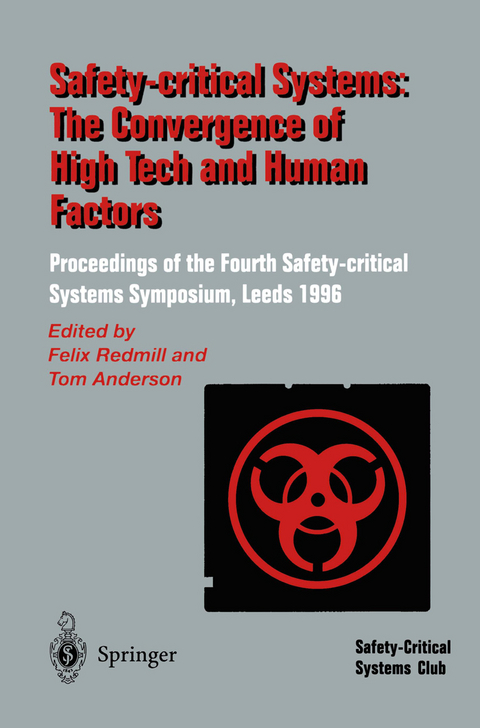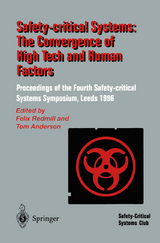Safety-Critical Systems: The Convergence of High Tech and Human Factors
Springer Berlin (Verlag)
978-3-540-76009-2 (ISBN)
Safety-critical systems, in the sense of software-based systems used in safety critical applications, are 'high-tech'. They are products of modern technology. Their effective, efficient and safe functioning depends not only on the devel opment of the right technologies but also on the right use of them. The safety of a system may be compromised not only by faults in the system but also by the use in the first place of an unreliable, unsafe, or unproved technology in its development. The key to the development and use of both technologies and systems is the human being. Until recently, the importance of human involvement, other than at the direct operational level, was hardly admitted. But now the unreliability of humans is recognised, as is the potential for latent faults to be introduced into systems at any point in their life cycles, by all who are in volved with them, including designers and strategic decision makers.
Meeting the Challenge of Changing Requirements.- LIFETRACK - Enhancing Team Knowledge and Corporate Memory in Petrochemical Operations Through Sharing Lessons Learnt.- Managing 'Risky' Projects.- Management of Dependability: A Railway Perspective.- Applying Bayesian Belief Networks to System Dependability Assessment.- Exploit (Technology) or Die.- Human Issues in the Software Development Process - Modelling Their Influence on Productivity and Integrity.- The Institution of Railway Signalling Engineers' Licensing Scheme - Promoting Competence in the Workplace.- Anticipate and Prevent - Managing the Legal Risks in Safety Critical Systems.- Organisational Learning Using Near-Miss and Accident Data Within and Outside your Organisation.- Understanding and Communicating Risk: A Psychological Overview.- Impact as a Human Factor in Interactive System Design.- Classifying and Managing Risk: The RATIFI Project.- Software Hazard and Safety Analysis: Opportunities and Challenges.- SADLI: Functional Programming in a Safety Critical Application.- System Safety Through Formal Domain-Specific Languages.- Effects of Technology on the Safety of Automotive Transport.- Author Index.
| Erscheint lt. Verlag | 31.1.1996 |
|---|---|
| Zusatzinfo | IX, 285 p. 15 illus. |
| Verlagsort | London |
| Sprache | englisch |
| Maße | 155 x 235 mm |
| Gewicht | 455 g |
| Themenwelt | Informatik ► Software Entwicklung ► User Interfaces (HCI) |
| Technik | |
| Schlagworte | Complexity • Design • Development • Functional Programming • Management • Modeling • organization • Productivity • programming • Software • structured analysis • Technologie • Technology • Transport |
| ISBN-10 | 3-540-76009-1 / 3540760091 |
| ISBN-13 | 978-3-540-76009-2 / 9783540760092 |
| Zustand | Neuware |
| Haben Sie eine Frage zum Produkt? |
aus dem Bereich




